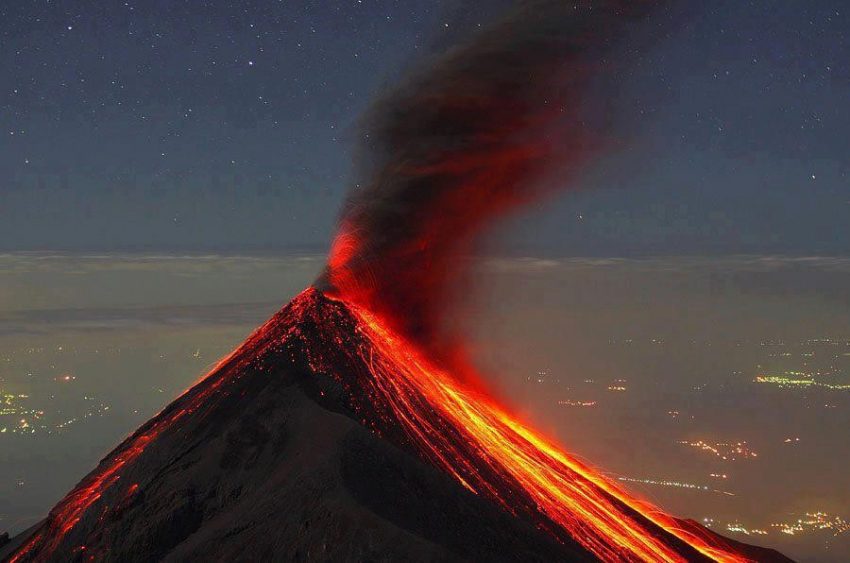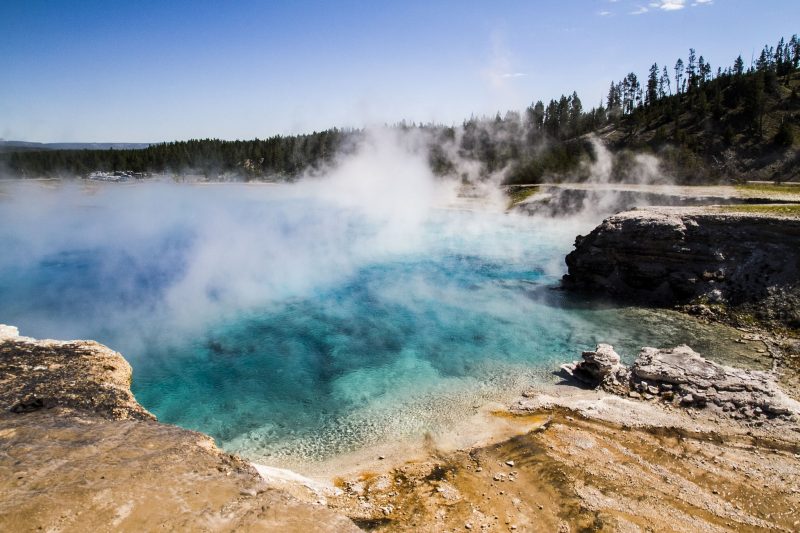The geothermal energy It is a more or less renewable energy source, of the volcanic type, which consists of taking advantage of the internal heat margins of planet Earth. For instance: volcanoes, desalination plants, agricultural drying.
Given that the recorded temperature increases as we get closer to the earth’s core, there are many water tables under the surface in which the water heats up and later emerges as large jets of steam and hot liquid, thus giving rise to geysers and hot springs that have been used by mankind since ancient times for various purposes. They are also very frequent in areas of high volcanic activity.
There are, then, three types of geothermal reservoirs, namely:
- Hot water. They can form a source or be underground (in aquifers). They are usually exploited through a double well system, which allows the reinjection of water so as not to deplete the reservoir.
- Dry. These are boiling fields with gas but without water, which can be used and then renewed by injecting the liquid to start them up again.
- Geysers. Hot springs at such pressure that they periodically emit steam and boiling water to the surface as they drain.
Although this energy is supposed to be renewable, since the earth’s heat is not depleted, it has occurred in various exploitation sites that the magma cools and ceases its heating of the water, in addition to being accompanied by small but frequent earth tremors. . That is why it is said that geothermal energy it is not entirely renewable.
Geothermal energy can be used for electricity generation, cooling and direct use of heat.
Examples of geothermal energy

- Volcanoes. Perhaps the most extreme and dramatic manifestation of geothermal energy are volcanoes, responsible for much environmental and biological destruction during their eruptions, which spew boiling magma (lava), toxic gases and suspended ash into the environment. Their energy potential is gigantic but wild, so they are not really usable in any way, but rather a natural disaster that many human populations must periodically deal with.
- The Geysers. This is the name of a set of geoelectric plants located 116 km from the city of San Francisco, United States, considered the largest complex of its kind in the world. It is capable of producing more than 950 MW of electricity at 63% of its productive capacity, using the steam emanating from more than 350 active geysers in 21 different plants.
- Desalination plants. Geothermal energy is currently used in the desalination of water, through the use of its heat for a cycle of evaporation and condensation of the liquid, which allows the removal of salts and other heavy elements present, for example, in sea water. This is an economic and ecological process that has been in vogue since 1995 by the American Douglas Firestone.
- Geothermal heat pumps. For both cooling and heating, geothermal energy is usable through air conditioning pump systems, to maintain the temperature of entire buildings. It is a high-performance heat source with low electrical demand, which takes advantage of the constant temperature of the first layers of the earth’s surface to reduce compressor cycles.
- Timanfaya Oven-Grill. Taking advantage of the volcanic activity of the Canary Islands, the restaurant “El Diablo” of local artisan food designed an oven that operates based on the exposure of food to the heat coming from the magmatic and geothermal activity of the Timanfaya National Park on the island of Lanzarote . East “vulkan grill”Consists of a series of grids installed in a well that goes directly into the earth.
- The geothermal power plant of Hellisheiði. Located in Iceland, near the Hengill volcano, 11 kilometers from the capital, this plant generates electrical energy and thermal energy, of 303 MWe and 133 MWt respectively. It is a growing facility since its inception in 2006, in the hands of the Orkuveita Reykjavíkur company.
- Geothermally heated greenhouses. In the city of Valencia, Spain, as well as in other similar projects in Chile, heat energy from underground thermal waters is already being used, through water extraction and injection cycles to keep the heat of a stable greenhouse all year round. despite the seasons. In this way, production could be maximized with a minimum energy cost and CO emissions reduced in the process.2 that usually accompany these subsoil emissions and that are atmospheric pollutants.
- Cerro Prieto geothermal power plant. The second geothermal plant in the world, with a capacity of 720 MW and expansion plans that would lead it to reach even higher figures, it is located very close to the homonymous volcano in Mexicali, Baja California, Mexico. It is made up of five individual units located to take advantage of the heat emanating from the magmatic activity of the subsoil.
- Agricultural drying. Taking advantage of the heat from geothermal energy to transmit it to agricultural substances that require drying, such as pasteurization of milk or sterilization of food, is a project of special interest to the Food and Agriculture Organization of the United Nations. In April 2015, this type of site was formally proposed, especially useful for developing countries, as it is an inexpensive and constant source of energy.
- Yellowstone Park Geysers. More than half of the 1000 geysers in the world are in this American National Park, considered the oldest in the world. This area has a strong and continuous volcanic activity, which is therefore covered with lava flows and sediments, with more than 200 geysers and 1000 different hot springs.

Other types of energy
| Potential energy | Mechanical energy | Kinetic energy |
| Hydroelectric power | Internal energy | Caloric energy |
| Electric power | Thermal energy | Geothermal energy |
| Chemical energy | Solar energy | Sound energy |
| Wind power | Nuclear energy | Hydraulic energy |
